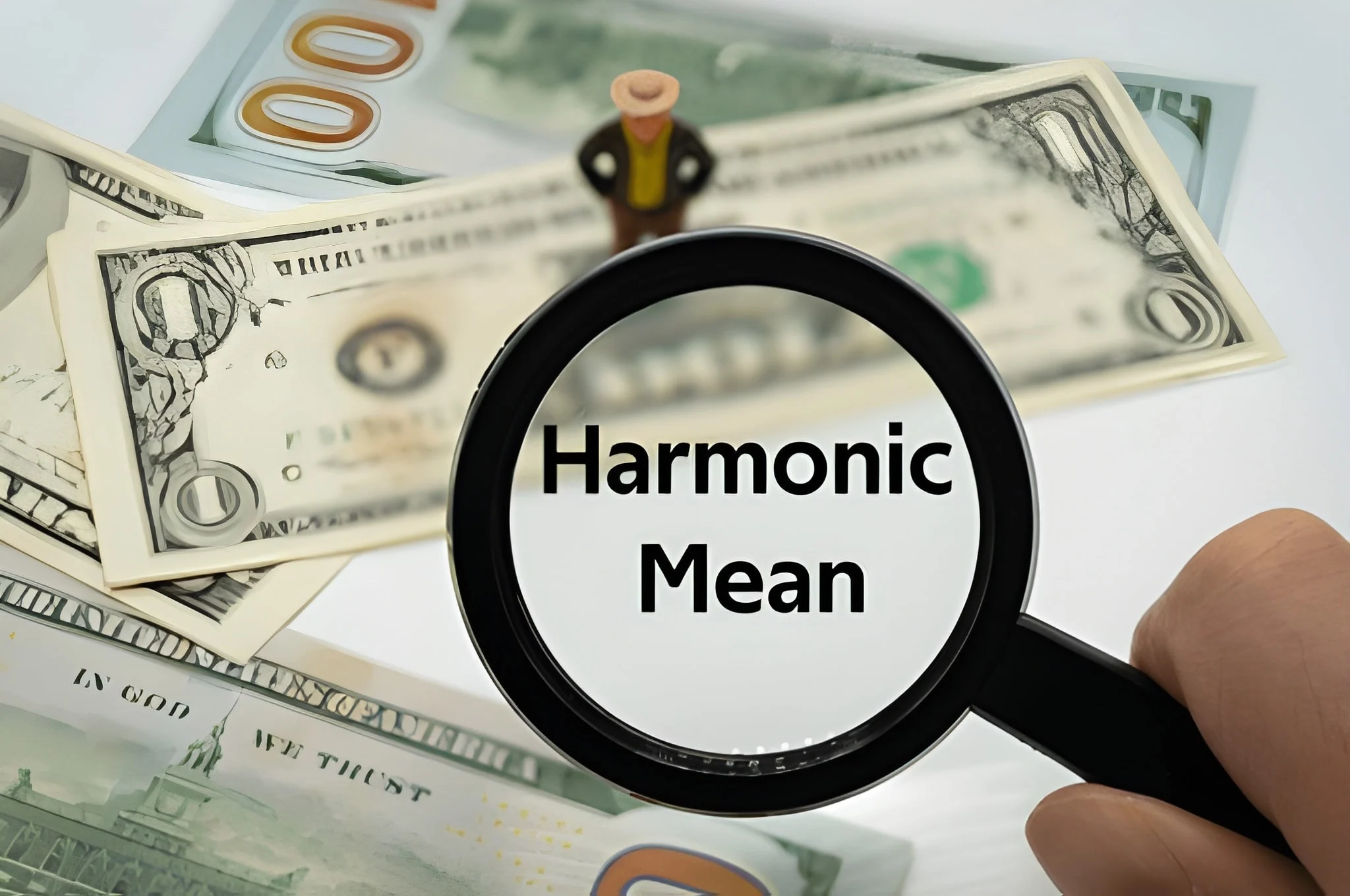Harmonic Mean Calculator
Calculate harmonic mean for rates, speeds, and ratios. Essential for physics, engineering, and finance applications.
All numbers must be positive. Harmonic mean is ideal for rates and ratios.
Compare harmonic mean with geometric and arithmetic means
Calculation Results
Enter positive numbers and click Calculate to see the harmonic mean
Related & Other Popular Calculators
Utilize the Harmonic Mean Calculator to quickly calculate the Harmonic Mean of any set of positive numbers. This free online Harmonic Mean Calculator will allow you to obtain precise results when calculating ratio, rates, or speeds; these are frequently used computations in physics, finance, and engineering. The Harmonic Mean Calculator also saves you time with its step-by-step worksheets for confirmation and verification of complex math.

What is the Harmonic Mean?
The Harmonic Mean is one of the three main means of dichotomic averages which includes the Arithmetic Mean and Geometric Mean. It is most useful when calculating averages of rates or ratios (e.g. speed, resistance, density) when the amount of time or a proportion is more important than the amount.
In simple terms, the Harmonic Mean allows smaller numbers to represent more than larger numbers. It is the best method for averaging averages in situations like calculating travel time at different speeds. Therefore, when traveling the same distance and at different speeds, the average speed will be calculated using the Harmonic Mean.
Harmonic Mean Formula
The harmonic mean formula is expressed as:
Where:
With this formula, you can ensure that each number contributes proportionally based on its reciprocal, and the result will always be less than both the geometric mean (GM) and arithmetic mean (AM) for any collection of positive values.
How to use the Harmonic Mean Calculator
Our calculation of harmonic mean is easy to use. Just follow these four easy steps to find it quickly and accurately:
The Harmonic Mean Calculator automatically applies the harmonic mean formula and in real-time it gives a comparison of the arithmetic mean, geometric mean and harmonic mean.
Example:
Let's take an example with numbers: 4, 6, 8, and 12.
So, now you know the Harmonic Mean of our group of numbers (4, 6, 8, and 12) is 6.4, which means it is lower than the GM (Geometric Mean, 6.93) and AM (Arithmetic Mean, 7.5) as illustrates perfectly the relationship of the arithmetic geometric and harmonic mean.
Relationship Between Arithmetic, Geometric, and Harmonic Mean
For any set of positive numbers:
Harmonic Mean ≤ Geometric Mean ≤ Arithmetic MeanThis relationship, known as the AM ≥ GM ≥ HM inequality, shows that the Harmonic Mean is always the smallest, while the Arithmetic Mean is the largest. The Harmonic Mean Calculator visually demonstrates this difference, making it easier to understand how these averages relate to one another.
Common Applications of Harmonic Mean
The Harmonic Mean is widely used in real-world calculations such as:
These scenarios rely on harmonic averages because they provide more accurate results than simple arithmetic means.
Advantages of using Our Harmonic Mean Calculator
Pro Tip
Remember:
As a result, the Harmonic Mean Calculator becomes a valuable educational and analysis tool while comparing the averages of rates or ratios.
The Harmonic Mean Calculator is an ideal online tool for learning and applying the harmonic mean formula in the real world. Whether you are comparing rates, speeds, or ratios, you want to be able to compare the arithmetic mean geometric mean and harmonic mean, or the differences between rates or other ratios, to gain certain accuracy and insights into your comparisons.
FAQs
The Harmonic Mean is used to find average rates or ratios (such as speed, resistance, or time) where smaller numbers count more in determining the average. This method can yield slightly different results than other evaluation methods.
The Arithmetic Mean is determined by adding your numbers together and dividing by how many numbers were added. The Harmonic Mean averages by using the numbers' reciprocals like 1/a or 1/b rather than just a and b. The Harmonic Mean is always smaller and is more suited for subjects based on rate calculations.
You can apply the harmonic mean formula: H=n/(1/x1+1/x2+…+1/xn) Our Harmonic Mean Calculator gives you results instantly!
They relate as follows: Harmonic Mean ≤ Geometric Mean ≤ Arithmetic Mean. This is always true for any collection of positive values.
No, the Harmonic Mean is defined only for positive numbers since any negative or zero value creates an undefined result when you take the reciprocal!
Manual calculation is a long process, and will often lead to rounding incorrectly at some stage. With our Harmonic Mean Calculator you can have accurate results in seconds along with step-by-step working and a mean comparison chart!